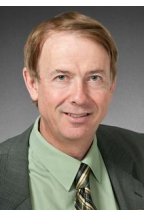Robert Mann

Biography
Professor Mann works on gravitation, quantum physics, and the overlap between these two subjects. He is interested in questions that provide us with information about the foundations of physics, particularly those that could be tested by experiment.
Professor Mann has a lively and energetic research group of about 10 graduate and undergraduate students, where we address a number of interesting questions in physics, such as:
How would relativity influence how a quantum computer worked?
Could we use a quantum probe to peek inside a black hole?
Is it possible that the Big Bang could be replaced with a black hole at the beginning of time?
Research Interests
Gravitation and particle physics
Tests of gravitational theory
Black holes
Quantum gravity and string theory
Astrophysics and Gravitation
Scholarly Research
Education
1982 PhD Physics, University of Toronto, Toronto, Ontario, Canada
1979 MSc Physics, University of Toronto, Toronto, Ontario, Canada
1978 BSc Physics, McMaster University, Hamilton, Ontario, Canada
Awards
2014, Award for Excellence in Graduate Supervision, University of Waterloo
2014, Highlight of the Year paper, Classical & Quantum Gravity (2013-2014)
2014 CGQ+paper Referee's top choice, Classical & Quantum Gravity (September and February)
2014 Presiden't Award of Merit, University of Waterloo
2013, Highlight of the Year paper, Classical & Quantum Gravity (2012-2013)
2010, Distinguished Teaching Award, University of Waterloo
2009, Teaching Excellence Award, Ontario Undergraduate Student Alliance
2009, Fulbright Fellow, University of California Santa Barbara, Institute for Theoretical Physics
Professional Associations
Life Member, International Society for General Relativity and Gravitation
Member, Canadian Association of Physicists
Member, Canadian Scientific and Christian Affiliation
Member, Institute for Particle Physics
2013-2015 International Journal of Mathematical Physics G, Associate Editor
2013-2015 Canadian Association of Physicists Foundation, Board Chair
2011-2015 International Union of Pure and Applied Physics, Subatomic Physics Division, Canadian Representative
2011-2013 Canadian Association of Physicists, Member, Board of Trustees
2010-2011 Canadian Association of Physicists, Past President
2009-2010 Canadian Association of Physicists, President
2009-present Classical and Quantum Gravity, Associate Editor
2007-present Symmetry, Integrability and Geometry: Mathods and Applications (SIGMA), Editorial Board Member
2001-present LT3 Advisory Board, University of Waterloo, Member
2001-present Canadian Association of Physicists, Friend
1999-present Canadian Journal of Physics, Divisional Editor
1990-present Physics Essays, Associate Editor
Affiliations and Volunteer Work
Waterloo Centre for Astrophysics
Associate member, Institute for Quantum Computing
Affiliate Member, the Perimeter Institute for Theoretical Physics
Teaching*
- PHYS 115 - Mechanics
- Taught in 2021
- PHYS 122 - Waves, Electricity and Magnetism
- Taught in 2021
- PHYS 124 - Modern Physics
- Taught in 2020, 2022, 2023
- PHYS 263 - Classical Mechanics and Special Relativity
- Taught in 2022
- PHYS 359 - Statistical Mechanics
- Taught in 2024
- PHYS 444 - Introduction to Particle Physics
- Taught in 2020, 2021, 2022, 2023
* Only courses taught in the past 5 years are displayed.
Selected/Recent Publications
Hennigar, Robie A., Kubizňák, David, Mann, Robert B. Entropy Inequality Violations from Ultraspinning Black Holes. Phys.Rev.Lett. (3) 115, pp. 031101(1)-031101(5).
Steele, T.G., Wang, Zhi-Wei, Contreras, D., Mann, R.B. Viable dark matter via radiative symmetry breaking in a scalar singlet Higgs portal extension of the standard model. Phys.Rev.Lett. (17) 112, pp. 1-6.
Kerner, Ryan, Mann, Robert B. Tunnelling, temperature and Taub-NUT black holes. PhysRevD. (10) 73, pp. 104010(1)-104010(11).
Fuentes-Schuller, Ivette, Mann, Robert B. Alice falls into a black hole: Entanglement in non-inertial frames. Phys.Rev.Lett. (12), 95, pp. 120404(1)-120404(4).
Kempf, Achim, Mangano, Gianpiero, Mann, Robert B. Hilbert space representation of the minimal length uncertainty relation. Phys.Rev.D. (2), 52, pp. 1108-1118.